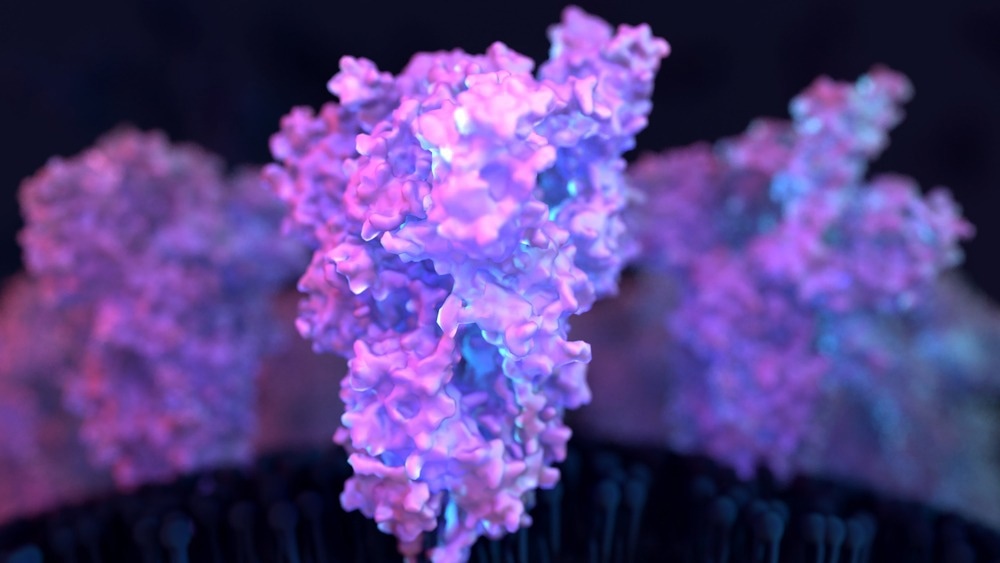Structure-directed mutagenesis produces thermostable SARS-CoV-2 spike protein trimers with potential vaccine booster applications

[ad_1]
In a latest examine posted to the bioRxiv* preprint server, a staff of researchers investigated the change within the stability, antigenicity, and protein expression of the extreme acute respiratory syndrome coronavirus 2 (SARS-CoV-2) spike protein trimer utilizing structure-directed mutagenesis to change a cavity within the core of the spike protein.

Background
Many coronavirus illness 2019 (COVID-19) vaccines are primarily based on the SARS-CoV-2 spike protein, they usually have considerably decreased the severity of the illness. The spike protein consists of two subunits, S1 and S2, separated by furin cleavage. The receptor binding area within the S1 subunit attaches to the angiotensin-converting enzyme-2 (ACE-2) receptor within the host cell. The S2 subunit containing the fusion peptide mediates viral entry into the host cell.
Membrane fusion is related to modifications within the coiled-coil construction of sophistication I viral glycoproteins, of which the SARS-CoV-2 S2 subunit is an instance. The inward-facing positions within the SARS-CoV-2 S2 coiled coil are polar residues that come shut collectively and type hydrogen bonds within the post-fusion spike trimer. Within the prefusion spike trimer coiled-coil, alanine residues in positions 1016 and 1020 type a cavity within the hydrophobic core shaped because of interactions between isoleucine and leucine residues within the 1013 and 1012 positions, respectively.
Protein folding research have revealed that such protein core cavities can destabilize the protein, and the thermal stability will be improved through the use of bulkier hydrophobic residues to fill the cavity. Utilizing this method to enhance the soundness of SARS-CoV-2 spike protein antigens might elicit extra steady and long-lived immune responses to vaccines.
Concerning the examine
Within the current examine, the researchers used a cytomegalovirus promoter, residues from the S glycoprotein of the ancestral Wuhan Hu-1 pressure, furin cleavage mutation, substitutions, and C-terminal area of T4 bacteriophage fibritin (T4 foldon), oct-histidine, and avitag sequences to supply the prefusion-stabilized two-proline spike trimer S2P-FHA. Artificial genes which coded for mutated S2P fragments have been launched into S2P-FHA.
Moreover, the S2P-1208.H8 expression vector comprising ectodomain sequences from the ancestral Wuhan Hu-1 pressure and SARS-CoV-2 Omicron BA.1 and BA.4/BA.5 was derived from the S2P-FHA plasmids. Divalent cation affinity chromatography was used to partially purify the S2P-FHA protein. Protein purification was then carried out utilizing dimension exclusion chromatography (SEC) and sodium dodecyl sulfate-polyacrylamide gel electrophoresis (SDS-PAGE).
The thermostability of the protein was assessed utilizing differential scanning fluorimetry. Western blot evaluation confirmed the expression of wild-type and mutated spike glycoprotein in transfected cells, whereas the membrane fusion skill of the spike glycoproteins was measured utilizing cell-cell fusion assays. The fusion exercise of the mutated spike proteins was decided via a luciferase assay.
Guinea pig fashions have been used to find out the immunogenicity of the S2P-FHA trimers carrying alanine cavity mutations. Spike pseudotyped human immunodeficiency virus luciferase viruses have been used to find out the neutralizing exercise of the serum from vaccinated animals. Moreover, serum-monoclonal neutralizing antibody cross-competition enzyme-linked immunosorbent assay (ELISA) was used to find out the antigenic websites inside the spike protein focused by the vaccine-induced antibodies.
Outcomes
The outcomes reported improved thermostability of the prefusion-stabilized spike trimer S2P-FHA after the alanine residue within the 1016 place was changed with a bulkier hydrophobic residue. Moreover, filling the alanine 1016/ 1020 cavity with bulkier residues additionally elevated the membrane fusion exercise of the spike glycoprotein.
Of the assorted S2P-FHA mutants produced, two mutants elicited excessive neutralizing antibody titers in opposition to the ancestral Wuhan-Hu-1 pressure and the Delta variant. In one of many mutants (16L), the alanine within the 1016 place was changed with a leucine residue, whereas within the different mutant (VI), the 1016 and 1020 alanine residues have been changed with valine and isoleucine, respectively. Nevertheless, the neutralizing antibodies elicited by these mutants in opposition to the Omicron BA.1 subvariant have been comparatively decrease.
Moreover, the mutated antigens elicited neutralizing antibodies that competed with the ACE-2 receptor for the receptor binding motif of the spike and acknowledged epitopes within the N-terminal area, receptor binding area, and stem of the spike S2 subunit. The VI mutant produced steady Omicron BA.1 and BA.4/BA.5 spike ectodomain trimers with out requiring an exterior T4 foldon trimerization motif.
Conclusions
To summarize, the examine investigated the manufacturing of thermostable SARS-CoV-2 spike protein trimers by filling the cavity shaped between two alanine residues within the coiled-coil core of the S2 subunit by changing one or each alanine residues with bulkier hydrophobic residues.
The outcomes indicated that the VI mutant stably expressed spike ectodomain trimers of Omicron BA.1 and BA.4/BA.5 subvariants with no need an exterior trimerization motif. The VI mutant can produce steady spike trimer glycoprotein vaccines for booster doses to strengthen the immune response in opposition to the emergent Omicron subvariants.
*Necessary discover
bioRxiv publishes preliminary scientific reviews that aren’t peer-reviewed and, due to this fact, shouldn’t be considered conclusive, information scientific observe/health-related conduct, or handled as established data.




